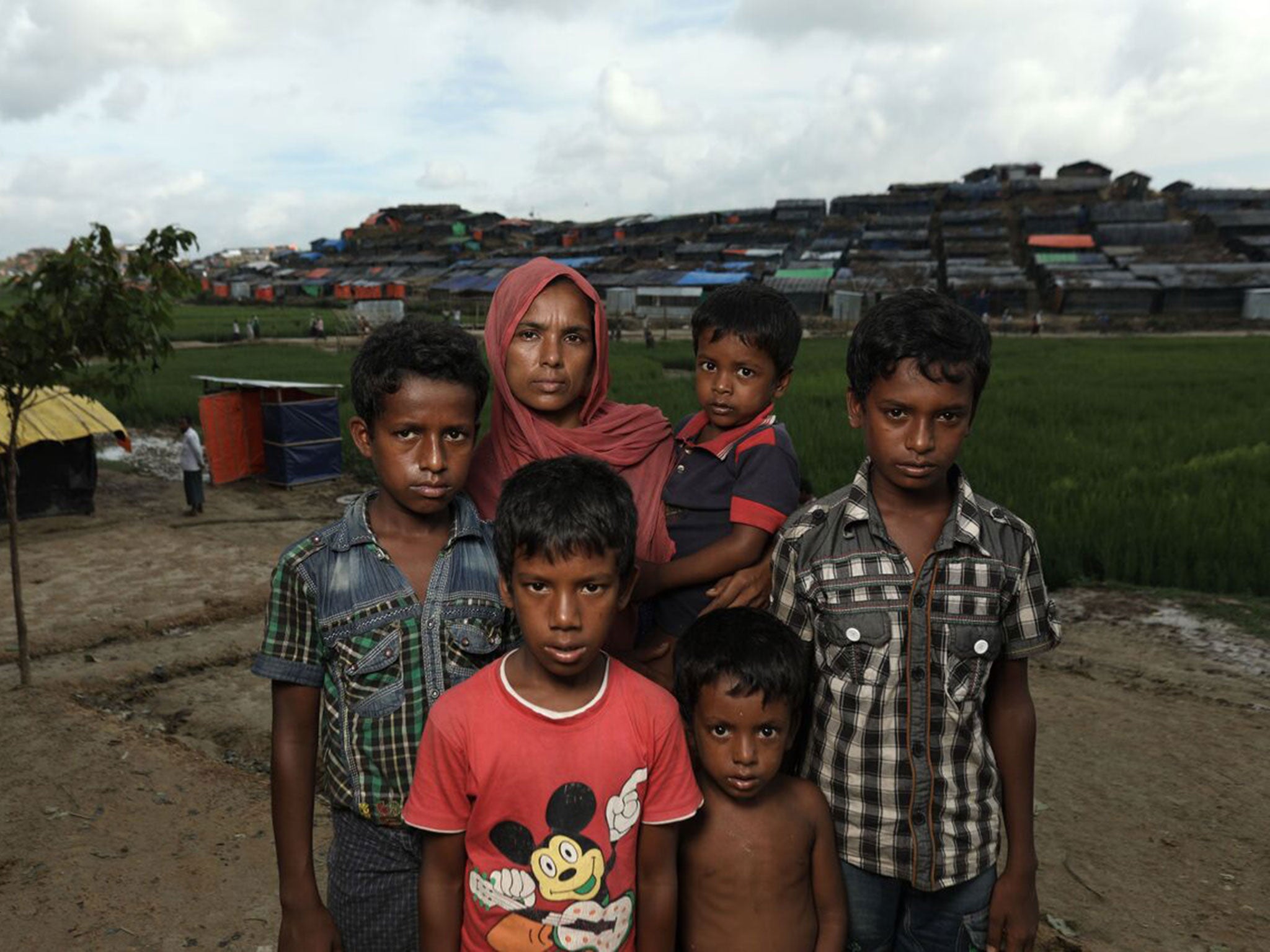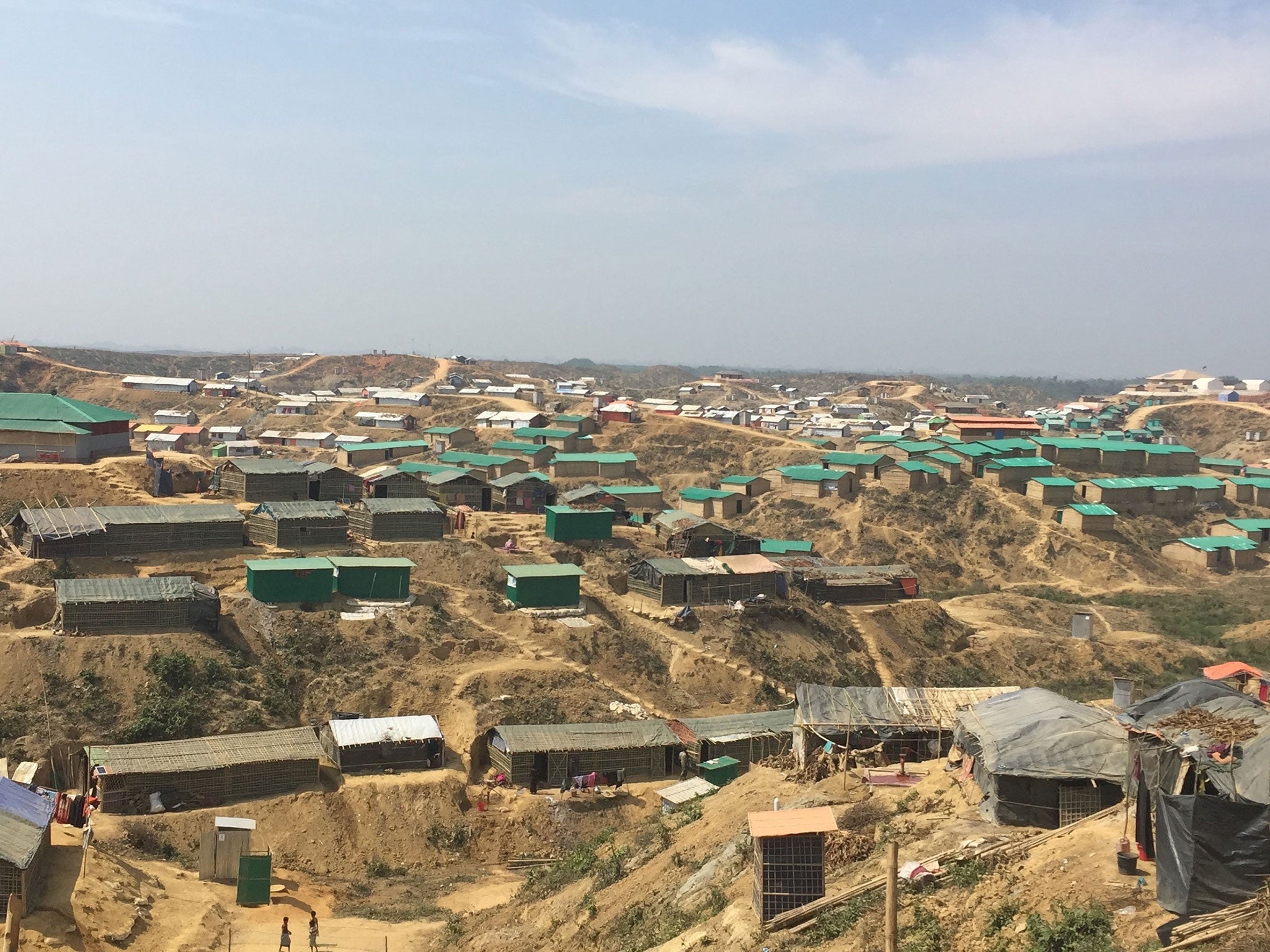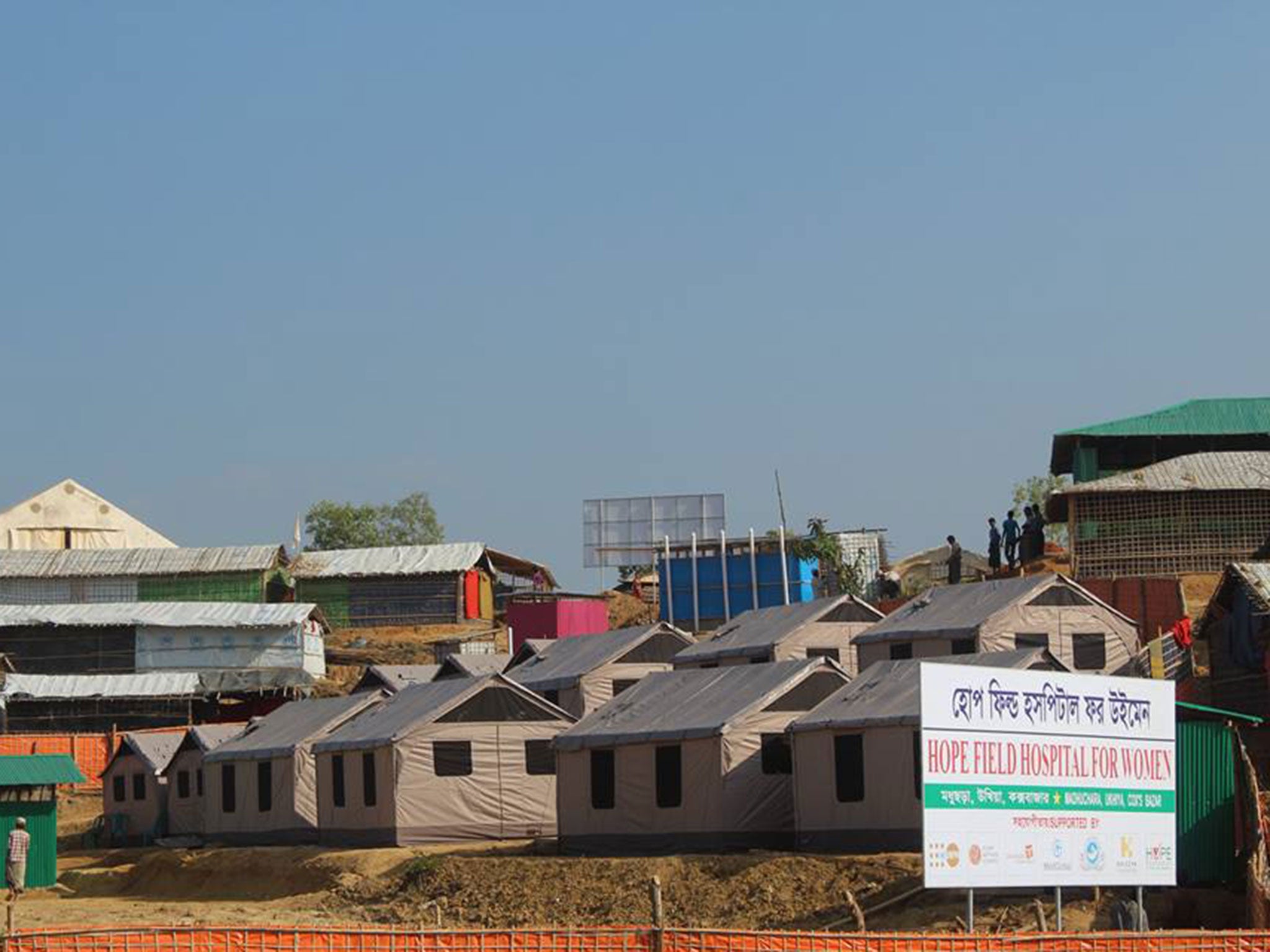Rohingya refugees face fresh turmoil as monsoon rains could wash away temporary homes and spread disease
‘Close to a million people are staying there, it’s extremely crowded. People are not going to be able to find a place to hide or take shelter’
Your support helps us to tell the story
From reproductive rights to climate change to Big Tech, The Independent is on the ground when the story is developing. Whether it's investigating the financials of Elon Musk's pro-Trump PAC or producing our latest documentary, 'The A Word', which shines a light on the American women fighting for reproductive rights, we know how important it is to parse out the facts from the messaging.
At such a critical moment in US history, we need reporters on the ground. Your donation allows us to keep sending journalists to speak to both sides of the story.
The Independent is trusted by Americans across the entire political spectrum. And unlike many other quality news outlets, we choose not to lock Americans out of our reporting and analysis with paywalls. We believe quality journalism should be available to everyone, paid for by those who can afford it.
Your support makes all the difference.Aid workers are scrambling to train emergency response teams as the coming monsoon season looms over Rohingya refugee camps in Bangladesh, threatening to bring potentially fatal flooding and landslides.
Nearly 700,000 Rohingya Muslims are living in crowded camps in Cox’s Bazar after fleeing sectarian violence in neighbouring Myanmar, where they have reported mass killings, rape and arson.
Hundreds of thousands will be at risk when the rains arrive later this month, said Dr Iftikher Mahmood, founder of the Hope Foundation for Women and Children of Bangladesh.
Dr Mahmood, who grew up in Cox’s Bazar, told The Independent the monsoon season there could be “devastating” and the Rohingya refugees could face a fatal mix of mudslides, floods and tropical storms.
Its location on the coast means Cox’s Bazar is considered a high risk area in Bangladesh, which is already prone to severe flooding during the monsoon season.
More than 100,000 refugees will be threatened by landslides and floods in the coming monsoons, according to computer modelling by the United Nations refugee agency (UNHCR).
In one mega-camp, Kutupalong, the population density is five times the recommended standard for refugee camps. The lack of space has forced the construction of shelters for refugees onto landslide-prone slopes and flood zones, putting over 102,000 people at risk in that camp alone.
Dr Mahmood warned there “is an extremely high risk of mudslides”, which could wash away the flimsy bamboo and plastic shelters that house the refugees, and flooding from heavy rains could turn everything to “slop”.
He said: “We have heavy rain around July and August. Everything is slop. People are underwater, houses are underwater, and also we get mudslides.”

Dr Mahmood also said the vulnerable coastal area could be wracked by tropical storms and hurricane-force winds: “There is no doubt, all these tents are going to be blown away at the first wind.”
The refugees could also face outbreaks of cholera and other waterborne diseases such as diarrhoea, and are at risk of pneumonia, which Dr Mahmood said can cause “rapid deterioration, especially in women and children”.
He added: “Mudslides could be fatal, floods could be fatal and the tropical storms could be fatal,” then went on to caution: “Close to a million people are staying there, it’s extremely crowded. People are not going to be able to find a place to hide or take shelter.”

In anticipation of the coming monsoon season, which the Bangladesh Meteorological Department said typically begins in April and peaks in July, the Hope Foundation is training between four and six emergency response teams, which will be comprised of 40 local staff who are used to responding to catastrophic weather.
“Right now we are training about 40 people, but our goal is to have 80 to put together mobile medical teams ready to respond,” Dr Mahmood said.
When the Rohingya refugee crisis broke out in August 2017, the Hope Foundation was one of the first organisations to mobilise to help those fleeing from Myanmar.
“Quickly, we set up a bunch of clinics in the locations where there was heavy need,” Dr Mahmood said. “At that time not many international or national NGOs came around, so we set up some clinics and started working, primarily on reproductive health, emergency care and primary care, and also made partners with other organisations so we are working together.”

Earlier this week Sheikh Hasina, Bangladesh’s prime minister, said more international pressure needed to be placed on Myanmar to take back Rohingya refugees and ensure their safety.
After a repatriation deal between the neighbouring countries was delayed, Bangladesh raced to prepare new homes on an uninhabited low-lying island in the Bay of Bengal, called Bhasan Char, before the monsoons.
“We are expecting to move those who are in a vulnerable place to the island,” Ms Hasina said. “Bangladesh can always be flooding and it does. The camps are very unhealthy. We have prepared a better place for them to live, with houses and shelters where they can earn a living.
“Where they are living now, the monsoon season is coming up, there can be land erosions, accidents are taking place.”
Dr Mahmood, who used his own money to set up the foundation in 1999, said it gives primary and emergency care, with a focus on maternal reproductive health and women’s health.
The Hope Foundation now provides a 24-7 hospital, more than 40 midwives, two gynaecological surgeons, an anaesthetist and 10 medical officers in the camps. Between September 2017 and April 2018, the foundation provided medical care for 137,010 refugees in total.
But with the coming monsoon season, Dr Mahmood called on the international community to provide more resources and help.
“The international community has a lot of resources, funding and expertise,” he said. “With so many people at risk... I think that the international community should get more involved and put their resources together and send some help so we can handle it together.”
He added: “I request the international community to come along with more resources and help our government and the local people to build a robust response system so lives can be saved.”
Last week, the UNHCR said conditions in Myanmar were not ready for the safe return of the Rohingya.
Both the United States and the UN have described the violence against the Rohingya as ethnic cleansing, an accusation Myanmar denies.

Join our commenting forum
Join thought-provoking conversations, follow other Independent readers and see their replies
Comments